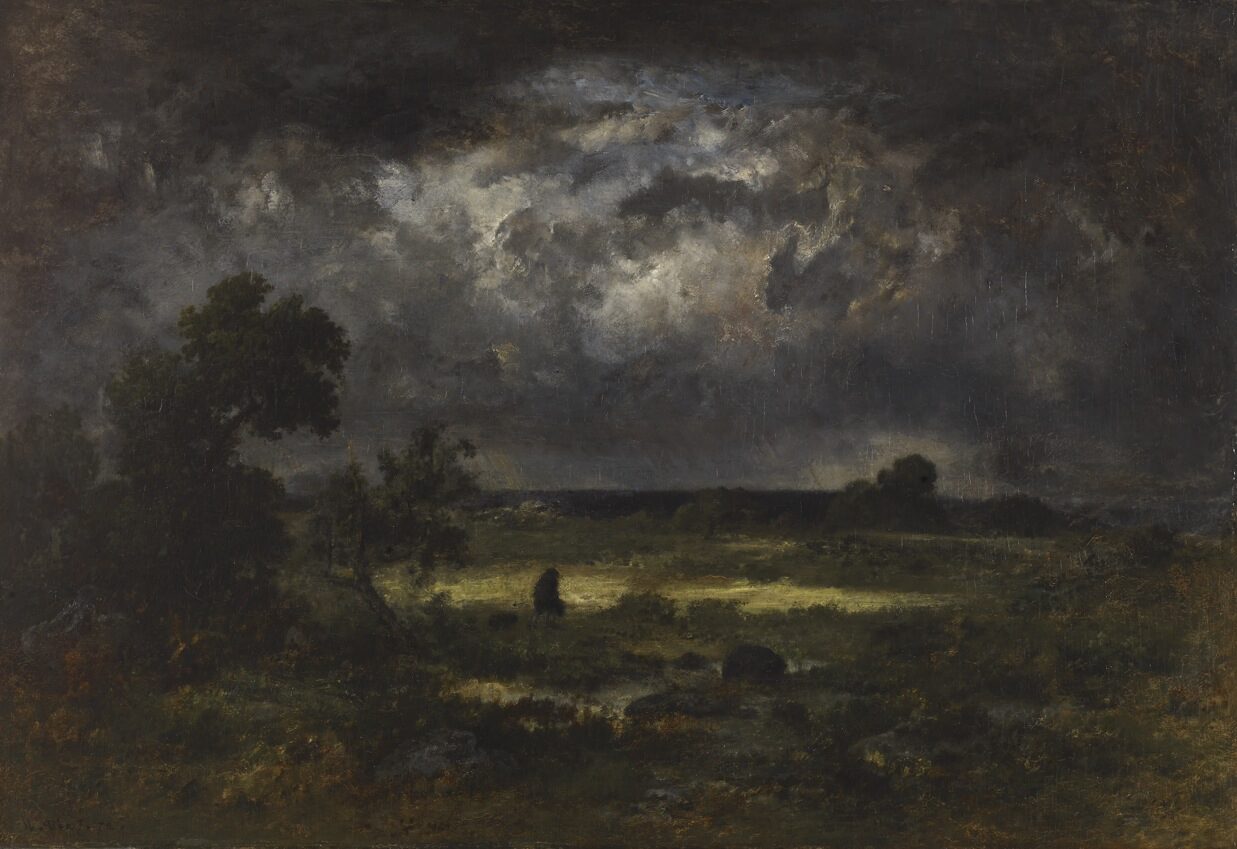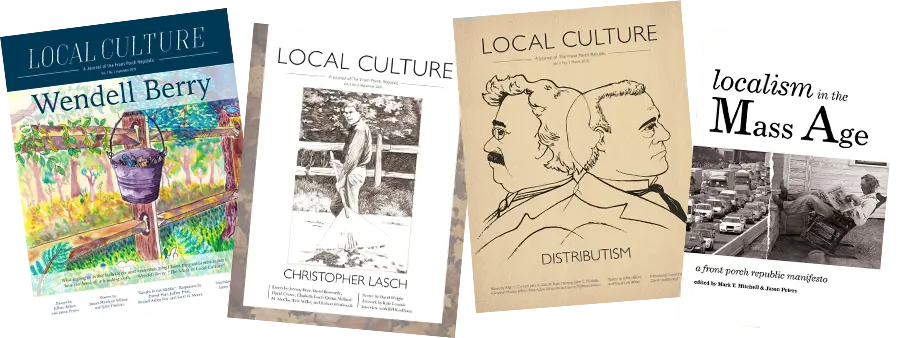There are certain movies whose opening sequences stick with you long after the final credits have rolled. The “I believe in America” speech in The Godfather. The Dawn of Man from 2001: A Space Odyssey. Rosebud in Citizen Kane. To my own idiosyncratic list of memorable openings must now be added the beginning moments of Warfare, the April 2025 film co-written and co-directed by Alex Garland together with former U.S. Navy Seal Ray Mendoza. A raw and authentic portrayal of an engagement that Mendoza and his fellow Seals had in Ramadi, Iraq in 2006, Warfare uses the grittiness of the battlefield as its calling card. Indeed, the movie’s poster is a close-up on the mustachioed face of a Seal, his features so covered in grime that you can barely make out his eyes beneath his smeared tactical glasses.
But as the film begins, the first images we see are of . . . women in skintight leotards suggestively thrusting their pelvises in a particularly deranged version of a 1980s-style aerobics class. The footage is from the music video for the 2004 hit song “Call on Me” by Eric Prydz, and we quickly learn that a large group of Seals are enthusiastically watching the video mosh pit-style. Pornography apparently being forbidden in American combat zones, the ever resourceful Seals are doing the best they can with what they’ve got. It is the first indication that its name notwithstanding, Warfare may not be your typical war movie. More importantly, it is a reminder that despite their status as warrior-elites by virtue of their selection and training, the Seals are also a bunch of rowdy young men—very different from most other rowdy young men in many key respects, but fundamentally alike in others. I can easily imagine the “Call on Me” scene having unfolded in my all-male dorm at Notre Dame (where pornography was likewise frowned upon) had the song come out just a couple of years earlier.
Cinematic depictions of the actions of small units in combat are obviously nothing new. Often, however, these depictions have been born of a desire to make larger political statements rather than to genuinely examine the consequences of war on a human scale. Drawing on the work of film scholar Jeanine Basinger, the cultural historian Richard Slotkin has written extensively about the significance of the so-called “Platoon Movie.” Starting in the 1940s during the Second World War, Hollywood began producing a series of films in which plucky multi-ethnic platoons of American soldiers would overcome their differences and unite to fight a common, often racialized enemy. Think Bataan (1943) for World War II or Pork Chop Hill (1959) for the Korean War. These movies presented viewers with a vision of what Hollywood believed America could and should be, not what it actually was. As Slotkin points out, a movie like Bataan depicted whites and African-Americans fighting side by side despite the action taking place at a time when the U.S. military was still rigidly segregated. In Slotkin’s account, the consequences of this act of invention were profound. Slotkin credits the Platoon Movie with having helped pave the way for the success of the civil rights movement through the form’s propagation of “a new myth of multi-ethnic American nationality” that served as an update to our original Frontier Myth of a United States forged in the conflict between noble whites and non-white savages.
The Seal team at the center of Warfare displays at least some of the ethnic diversity of a traditional Platoon Movie, but without the invention. In making Warfare, Garland and Mendoza set out to capture the events of the 2006 engagement as accurately as possible based solely on the memories of the men who were actually there. Photographs of these men, many with their faces blurred, appear during the final credits alongside pictures of the actors who portrayed them. Although presumably the product of a desire to protect the identities of Seals who may still be in service, the blurred faces also seem fitting given how little we learn about the characters over the course of the film. Perhaps not surprisingly, the actual Seals didn’t spend much time talking about their lives—where they came from, who is waiting for them at home, what hopes they have for the future—during a firefight. Nor did they talk about why they were in Ramadi in the first place. Thus, a film that seeks to be as faithful a re-creation of that firefight as can be achieved given the frailties of human memory is necessarily shorn of all the exposition wedged into a more conventional war movie.
What we get instead is as complete an immersion into the brutal realities of combat as we are ever likely to get on film. That this combat involves U.S. Navy Seals specifically feels important. At a time when the United States is increasingly relying on special operations forces like the Seals to project power abroad, complicating the prevailing picture of the surgical and bloodless special ops raid is a public service. As Garland and Mendoza show us, war is a chaotic mess that often leaves even its most skilled and heroic practitioners badly shaken and sometimes physically shattered. The sound design in Warfare is remarkable, and, much like the opening sequence but with far more serious implications, the screams of badly wounded Seals stay with you well beyond the theater. As do images of an Iraqi interpreter cut in half by an improvised explosive device.
Warfare had its genesis in a relationship that Garland developed with Mendoza while the latter was serving as a military consultant on the former’s 2024 movie Civil War. Like Warfare, Civil War is largely uninterested in the origins of its titular conflict. We learn that the unlikely pairing of Texas and California have formed an alliance called the Western Forces that has seceded from the United States, but not much else. As in Warfare, Garland is focused on what can happen when a civil war breaks out to the exclusion of why such an event might occur at all. And what is shown as being possible when a nation is at war with itself is even more brutal than the small-unit action depicted in Warfare: A suicide bombing of civilians. The torture of alleged looters. The execution of prisoners. The use of a dump truck to pile bodies into a mass grave.
The critical response to Warfare has been pretty consistently laudatory. Reactions to Civil War were also positive, although less universally so. In both cases, dissentient voices have mainly focused their critiques on the films’ lack of context and therefore viewpoint. According to this perspective, Garland had a responsibility in his films to comment on whether or not the United States should have invaded Iraq and on the specific forces that may currently be leading Americans down the path to civil war. One reviewer went so far as to describe Garland’s failure to do so as “unethical” and “politically spineless.”
But a focus on the “what” of waging war rather than the “why” seems like one appropriate reaction to the fundamentally unpredictable nature of the reasons people come up with for going to war. If in the mid-1990s screenwriter Alex Garland had pitched a script about the son of a former U.S. President who himself became President and then launched an invasion of a country in the Middle East—supposedly because of yellowcake uranium but possibly because he wanted to avenge his father’s honor—the note from the studio heads would have been “too far-fetched.” And yet there was Mendoza’s team in Ramadi in 2006.
A film that delves too deeply into the “why” of a conflict risks distracting the audience from the horrors that follow. “We’ve learned our lesson since then” or “that could never happen here” viewers might say. But if history teaches us anything, it’s that of course we really haven’t and yes it absolutely could. There is something to be said for forcing an audience to sit with the terrible consequences attendant to any war—just or unjust, predictable or not—free from other considerations.
In the future, the United States will almost certainly be faced with further decisions about whether to go to war. It’s even possible that we may one day find ourselves once again on the brink of civil war. At those moments, we can only hope that what Garland and now Garland and Mendoza have shown us about the nature of warfare and how it affects individual human beings will remain top of mind as we weigh what to do next.
Image Credit: Narcisse Virgile Diaz de la Peña, “The Approaching Storm” (1872) via Catalogue of French Paintings.






